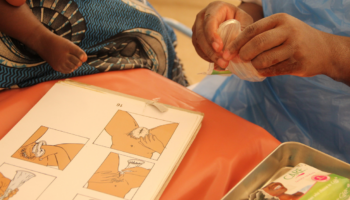The rhythm method is a natural form of family planning which encourages women to become familiar with their menstrual cycle and avoid unprotected sexual activity on the days they're most likely to conceive.
The rhythm method is also known as the Knaus-Ogino Method, the fertility awareness method, the calendar method, and the calendar rhythm method.
More About Rhythm Method
Women that use the rhythm method take note of their menstrual cycle over several months (ideally between six and 12). They determine the length of each cycle starting on the first day of a period and concluding with the first day of the next period. They calculate the length of their shortest cycle, and then subtract 18 from this number to determine the length of their infertile period prior to ovulation. By subtracting 11 from the length of their longest cycle, they can determine when the infertile phase after they ovulate will begin.
These women would avoid sex or use a barrier contraceptive during their calculated fertile days. As women's cycles can change, women using the rhythm method should update their calculations on a monthly basis.
When used within the measures stated, the rhythm method prevents pregnancy in 91% of cases. However, many women make errors in the calculations or fail to update their calculations. This decreases the average effectiveness to between 75 and 87%.
Despite its relatively high failure rates, the rhythm method may be attractive to some couples who prefer a more natural form of birth control or who shun other contraceptive methods for religious reasons. The rhythm method is also free unlike other forms of birth control. It also doesn't carry a risk of side effects, but it does not protect from sexually transmitted diseases.
The rhythm method can also be used in the reverse by couples hoping to fall pregnant. Similar calculations can tell couples when they should have sex to increase their chances of conception.



